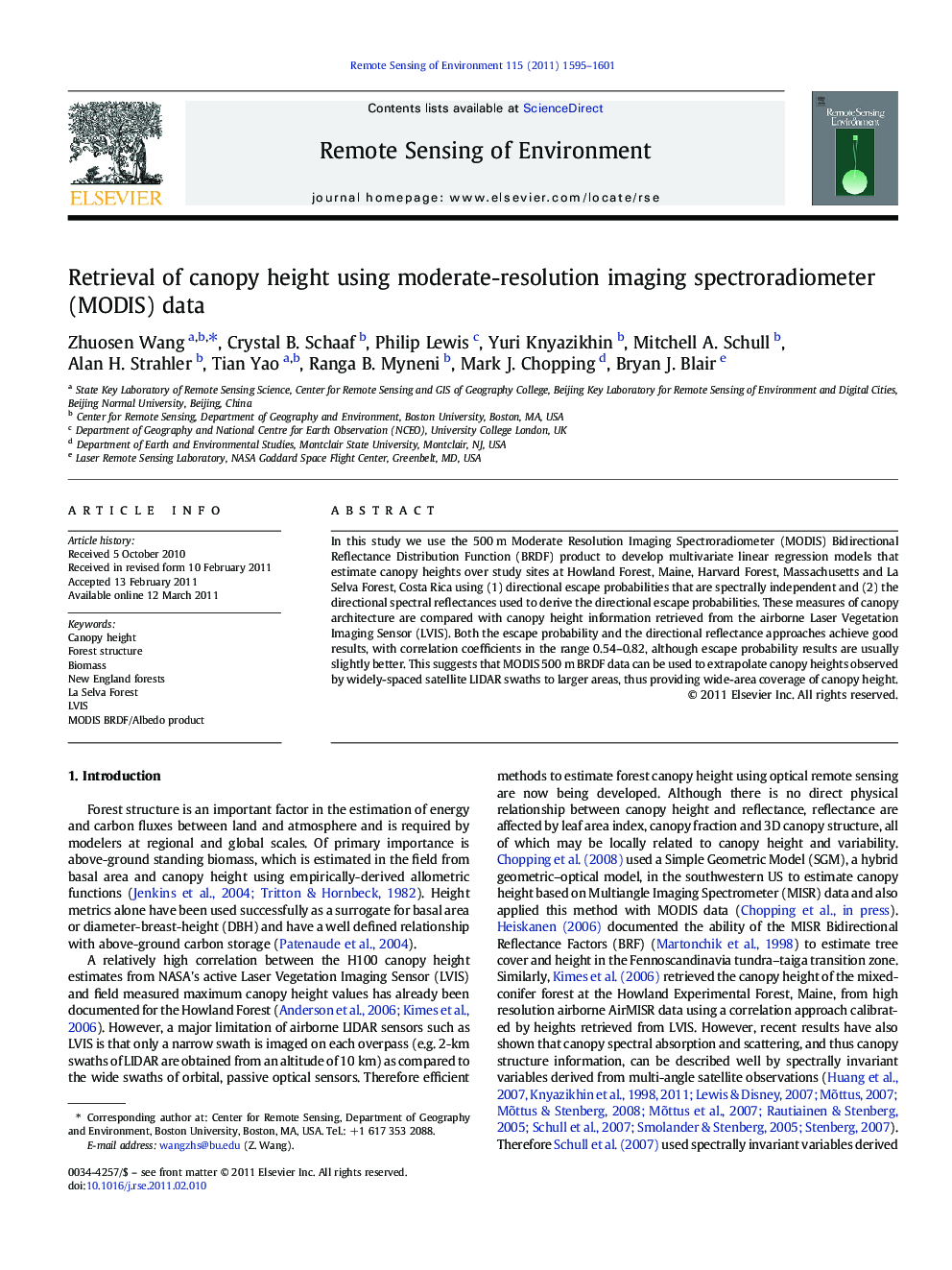| Article ID | Journal | Published Year | Pages | File Type |
|---|---|---|---|---|
| 4459396 | Remote Sensing of Environment | 2011 | 7 Pages |
In this study we use the 500 m Moderate Resolution Imaging Spectroradiometer (MODIS) Bidirectional Reflectance Distribution Function (BRDF) product to develop multivariate linear regression models that estimate canopy heights over study sites at Howland Forest, Maine, Harvard Forest, Massachusetts and La Selva Forest, Costa Rica using (1) directional escape probabilities that are spectrally independent and (2) the directional spectral reflectances used to derive the directional escape probabilities. These measures of canopy architecture are compared with canopy height information retrieved from the airborne Laser Vegetation Imaging Sensor (LVIS). Both the escape probability and the directional reflectance approaches achieve good results, with correlation coefficients in the range 0.54–0.82, although escape probability results are usually slightly better. This suggests that MODIS 500 m BRDF data can be used to extrapolate canopy heights observed by widely-spaced satellite LIDAR swaths to larger areas, thus providing wide-area coverage of canopy height.
Research Highlights► We used the 500 m MODIS BRDF/Albedo product and Lidar data to estimate canopy heights. ► We compared the estimation using spectral invariants parameters and directional reflectance. ► This study indicates a potential to use multi-angle, multi-spectral reflectances to extrapolate narrow swath LIDAR canopy structure information to larger regions.
